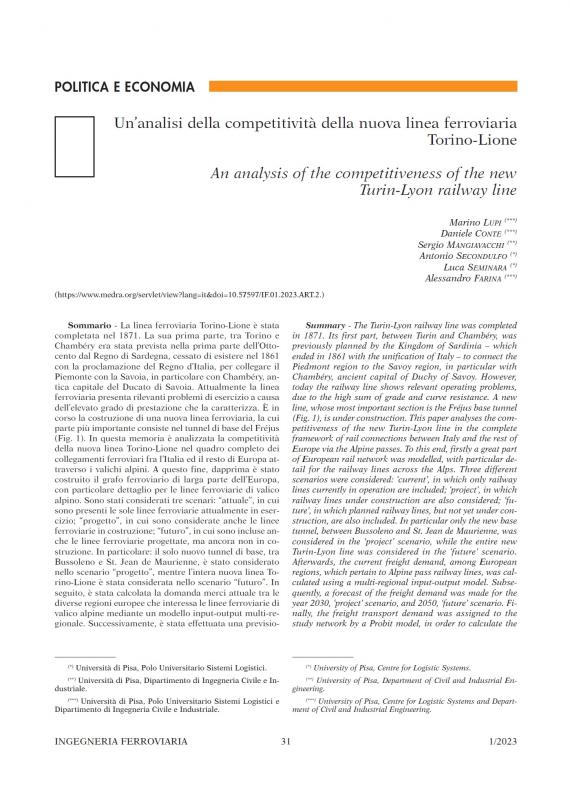
Summary - The Turin-Lyon railway line was completed in 1871. Its first part, between Turin and Chambéry, was previously planned by the Kingdom of Sardinia – which ended in 1861 with the unification of Italy – to connect the Piedmont region to the Savoy region, in particular with Chambéry, ancient capital of Duchy of Savoy. However, today the railway line shows relevant operating problems, due to the high sum of grade and curve resistance. A new line, whose most important section is the Fréjus base tunnel (Fig. 1), is under construction. This paper analyses the competitiveness of the new Turin-Lyon line in the complete framework of rail connections between Italy and the rest of Europe via the Alpine passes. To this end, firstly a great part of European rail network was modelled, with particular detail for the railway lines across the Alps. Three different scenarios were considered: ‘current’, in which only railway lines currently in operation are included; ‘project’, in which railway lines under construction are also considered; ‘future’, in which planned railway lines, but not yet under construction, are also included. In particular only the new base tunnel, between Bussoleno and St. Jean de Maurienne, was considered in the ‘project’ scenario, while the entire new Turin-Lyon line was considered in the ‘future’ scenario. Afterwards, the current freight demand, among European regions, which pertain to Alpine pass railway lines, was calculated using a multi-regional input-output model. Subsequently, a forecast of the freight demand was made for the year 2030, ‘project’ scenario, and 2050, ‘future’ scenario. Finally, the freight transport demand was assigned to the study network by a Probit model, in order to calculate the freight flows on the various Alpine railway passes in the different scenarios considered. This analysis shows that on the future new Fréjus railway line there will be a significant increase in freight flows, until reaching, in the ‘future’ scenario, freight flows comparable to those of the Gotthard and Brenner, albeit lower.
https://www.medra.org/servlet/view?lang=it&doi=10.57597/IF.01.2023.ART.2.
- Gennaio


